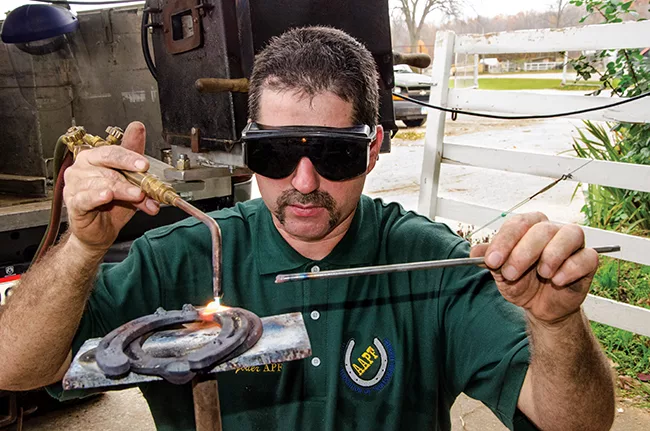American Farriers Journal
American Farriers Journal is the “hands-on” magazine for professional farriers, equine veterinarians and horse care product and service buyers.

Traction devices can be a slippery slope, not only for the horse, but the farrier too.
Although the devices provide the stability that a horse needs while traveling over rough or slick terrain, they also can introduce problems.
Lester Yoder has a small number of pleasure riding horses among his clientele that need traction devices applied to their shoes.
“I would say about 10% of the horses I do have some sort of traction device on a regular basis,” says the Shreve, Ohio, farrier, who has about 400 horses under his care. “That’s not a lot, but if you don’t have the means to do it, you’re limiting your practice if you have a client who wants or needs that service.”
Lay Of The Land
Most of Yoder’s trail-riding clients travel a portion of the nearly 82 miles of bridle trails in Cleveland Metroparks, an extensive system of nature preserves that surrounds the majority of Cleveland, Ohio. Horses cross a number of different terrain in the Metroparks system — hard-packed dirt, rocky paths, streams, rivers, asphalt and concrete.
“It’s very important for the farrier to understand what type of terrain the horse will be traveling on, as well as how the horse is being ridden,” Yoder says. “I like to gather all the information I can get from the horse owner or rider before I make any decision about traction.”
Depending on the terrain, Yoder prefers using rim shoes, tungsten pins, Borium or Drill-Tek.
“The option I choose will vary…